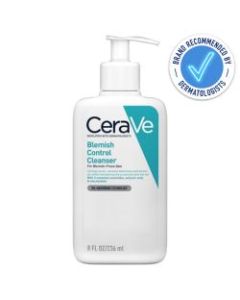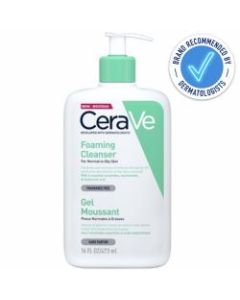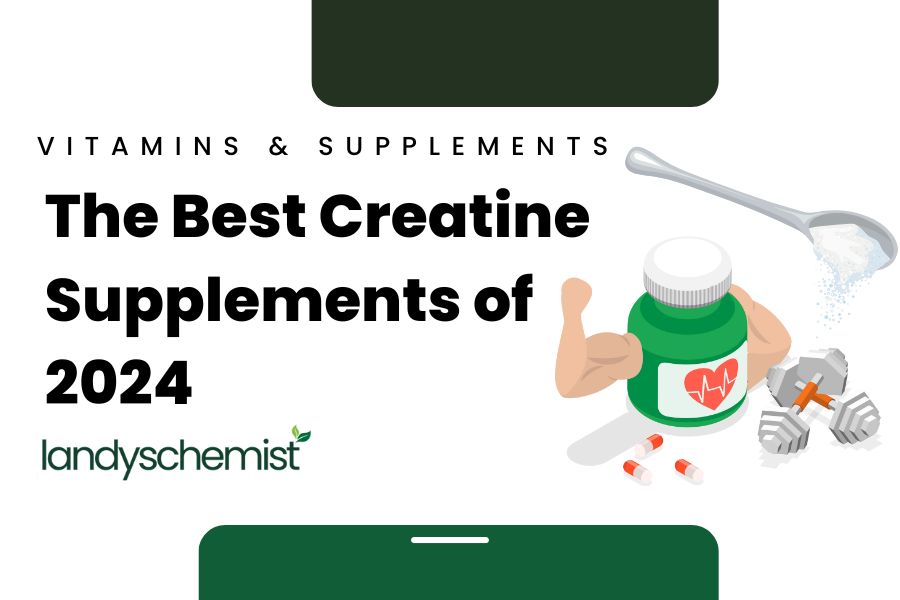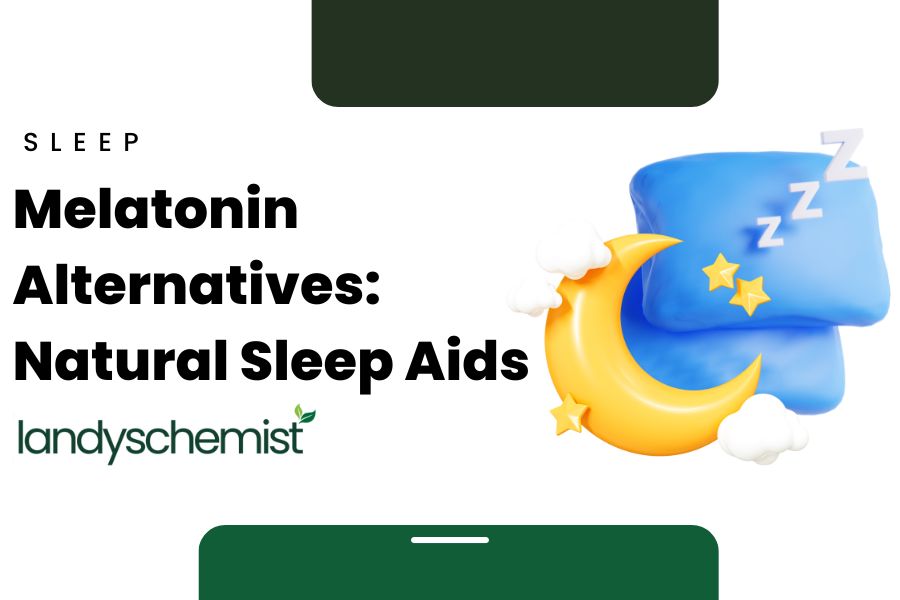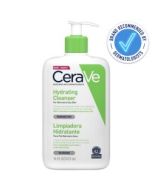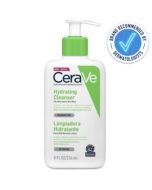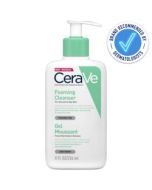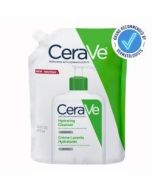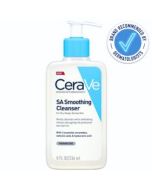
Which CeraVe cleanser is best for acne or oily skin?
One of the most effective ways to promote clear skin is consistently using targeted formulas whilst maintaining and protecting the skin’s protective barrier. This can help prevent acne from appearing whilst keeping the skin hydrated.
Here is how CeraVe products can help you create a consistent routine for acne or oily skin!
If you have oily or acne-prone skin, it is easy to overload the skin with harsh or active ingredients that we think might be helping but are actually stripping the skin of essential oils. This in fact makes the skin overcompensate, produce more oil and then we are back where we started!
Is there a difference between acne prone and oily skin?
There is often a misconception that if you have acne prone skin then your skin must be oily, but this is not the case. You can actually have acne-prone skin no matter whether it is oily, dry, or normal.
You may however be more prone to acne if you have skin on the oilier side due to excess sebum clogging the pores. It is possible that the skin can tolerate the excess sebum and pores remain open and unclogged. If this is the case, then it is more likely that you will have a clear complexion.
Acne can be caused by a myriad of factors, from hormones to your diet, not just excess oil. This is important to remember!
Why is Oily Skin Prone to Breakouts?
Oily skin tends to be more prone to acne breakouts as there is excess oil or sebum production on the skin. These can cause the hair follicles to become clogged with oil, dead skin cells and bacteria which can cause inflammation within the hair follicles leading to cysts and pimples.
However, it is necessary to note that the underlying cause of acne is complex and can also be influenced by factors like the level of androgen hormones in the body. Androgen hormones help regulate sebum production. If an individual has higher androgen levels, like those with PCOS, then the sebaceous glands within the skin can become larger, producing more oil which can lead to inflammation, and create an environment specific for acne-causing bacteria to thrive in.
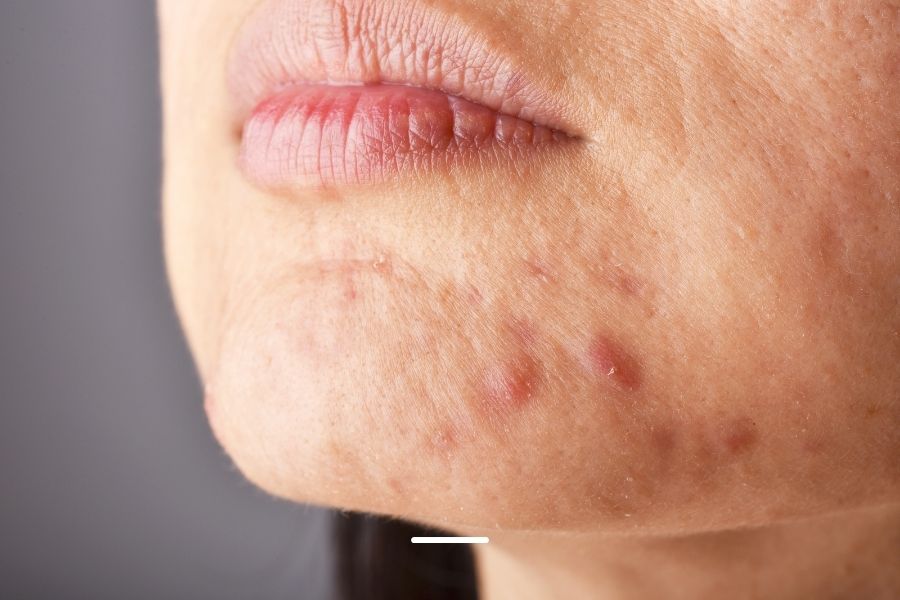
How to identify if you have oily or acne-prone skin:
If you have oily skin, the skin tends to be shinier and feel greasier due to the excess sebum production. Other characteristic features of oily skin include pores that are more enlarged and the presence of blackheads.
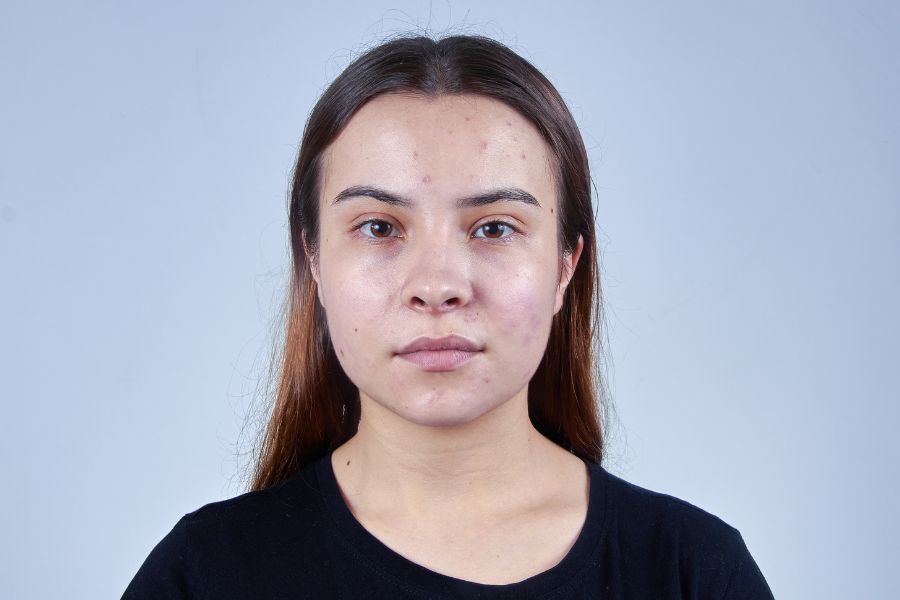
If you have acne-prone skin, you may experience recurring breakouts, as well as redness and textured skin. You can be prone to acne but still have dry or oily skin types.
Is your skincare causing your breakouts?
It is crucial to look at the ingredients within our skincare products as they can sometimes actually be the reason that we are experiencing breakouts and inflammation on our skin.
Comedogenic Skincare:
Certain ingredients within our skincare products, including those in natural skincare, can clog our pores and lead to acne formation. These ingredients are termed “comedogenic”. Examples of comedogenic skincare ingredients include coconut oil, cocoa butter, ascorbyl palmitate and Linolenic acid as well as some thicker emollients. Products that are labelled as “non-comedogenic” are more suitable for skin that is sensitive and prone to acne.
Although comedogenic ingredients can affect acne-prone skin, comedogenic ingredients may not impact other skin types. The sensitivity of your skin plays a role in how we react to certain ingredients. A common occurrence in those with acne-prone skin is that they excessively wash the face to remove excess oil which not only damages the skin barrier but increases the likelihood of sensitivity and irritation to ingredients.
Synthetic perfumes
When skincare products contain synthetic fragrances like “parfum”, “fragrance”, “linalool”, and “limonene”, they can possibly cause irritation to those that have sensitive or acne-prone skin. Certain fragrances can potentially clog pores or increase inflammation within the skin which can lead to the formation of acne.
How to choose the right CeraVe Cleanser for your skin:
A consistent cleansing routine is important for both acne prone and oily skin types as it helps to reduce excessive sebum production, eliminate dead skin cells, and target bacteria on the skin’s surface.
When selecting a cleanser, it is important to understand what skin type you have, to help determine whether the ingredients will be soothing or potentially worsen existing issues. The facial wash should effectively remove excess oil whilst still maintaining the skin’s natural pH balance and hydration levels.
Choosing a CeraVe cleanser for Acne-Prone Skin:
When identifying a suitable cleanser for acne-prone skin, it is necessary to find a product that you can use daily that will not strip the skin, but still exfoliate away dead skin cells.
Key ingredients to look out for in cleansers for acne-prone skin include salicylic acid and benzoyl peroxide. These ingredients help to exfoliate the skin, eliminating the accumulation of dead skin cells and helping to unclog pores.
CeraVe is the top dermatologist-recommended cleanser brand for acne, and the CeraVe Blemish Control Cleanser is a daily facial wash enriched with 2% salicylic acid that is designed to reduce the appearance of blackheads and proactively prevent new breakouts. The inclusion of Hectorite Clay helps to absorb excess oil, minimising shine. Ceramides and Niacinamide are also included in this formulation which helps to restore the skin’s barrier. With a non-comedogenic formulation, this cleanser is fragrance and paraben free.
Choosing a CeraVe cleanser for Oily Skin:
Even if you have oily skin, it is important to ensure that your skin is hydrated. It is essential to find a cleanser that hydrates and soothes the skin without clogging the pores.
When finding a cleanser for oily skin, look out for key ingredients like non-comedogenic Hyaluronic Acid which is known for plumping the skin and drawing in moisture. Additionally, it is good to consider ingredients like Niacinamide (Vitamin B3) which helps to restore the skin barrier, and ceramides which are lipids that protect the skin and prevent compromise to the skin barrier.
A great cleanser for oilier skin types is the Cerave Foaming Facial Cleanser. This helps to effectively cleanse and purify the skin, eliminating excess oil whilst preserving the skin’s barrier integrity. It is enriched with three essential ceramides which play a role in maintaining moisture in the skin. It also features hyaluronic acid which acts as a humectant, attracting and retaining moisture as well as niacinamide which soothes the skin.
Summary:
- Oily skin is due to excess sebum production on the skin which can result in a shiny appearance, enlarged pores and the presence of blackheads.
- Acne-prone skin is where you may be more prone to breakouts due to factors including diet, hormones and skincare, but you can still have oily or dry skin types.
- When looking for a cleanser for oily skin look for key ingredients like Hyaluronic Acid, Niacinamide and Ceramides.
- When identifying a suitable cleanser for acne-prone skin, look for ingredients like Salicylic Acid, Benzoyl Peroxide as well as Niacinamide and Ceramides.
By Saarah Mengrani, MSc Biotechnology

